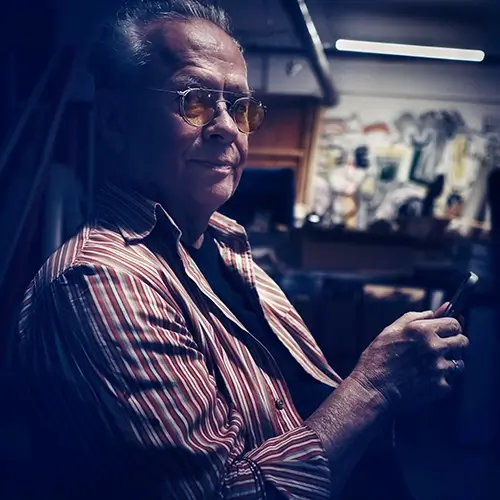Robert Mack is a California-based visual artist, photographer, and filmmaker. His fine art photography and films have been exhibited widely in the United States and Europe, with major shows at the Baltimore Museum of Art and the Reiss-Engelhorn Museum in Mannheim, Germany. Both institutions hold his work in their permanent collections. Working across different media, Mack has built a career exploring the complexities of human presence and representation.
In 1981, while living in Baltimore, he produced 'The Perkins Project: Not Guilty by Reason of Insanity', a rare photographic and film study inside Maryland’s hospital for the criminally insane. These stark yet compassionate black-and-white portraits remain one of his most powerful and controversial bodies of work.
We asked him a few questions about his life and work.
All About Photo: Where did your journey as an artist begin?
Robert Mack: At the age of eleven, I bought a Kodak brownie 127 film camera, where once the photos were taken to the lab it took 3 - 4 days before I could see the black and white prints. One day, I took a nice close-up portrait of my 2 year old brother Chris running towards me. When I looked closely at the black and white photograph, there was a woman’s nude body, head to toe, Venus-like from behind, in the background. I was somewhat shocked by this nude image and asked my mother what she thought. She said, “Oh, it’s probably just one of your father’s paintings. “ So when I showed the photograph to my father, who is a painter, he said, “That’s your mother running to the bathroom to take a shower!” Well, to me that was the magic of photography, for one never knows what the image might tell us.
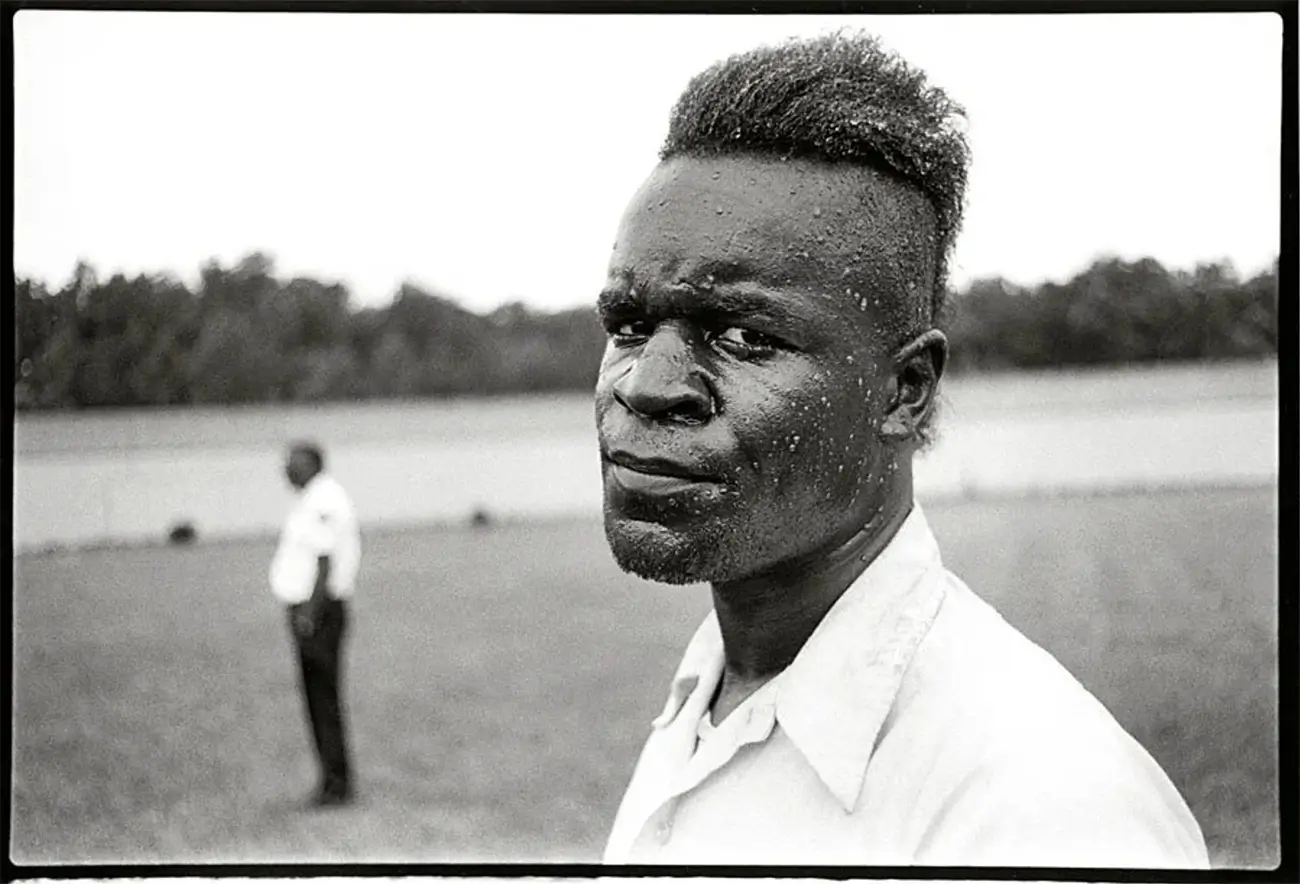
Untitled 1981, Photograph Silver Gelatin © Robert Mack
As a young boy, I remember seeing all the photos in Life Magazine and National Geographic that my father purchased, and, as a young man, I pursued my interest in photography. There were so many influences, including up to today including the works of Robert Frank, Diane Arbus, Sebastiao Salgado, Graciela Iturbide, Richard Avedon, Irving Penn, Mary Ellen Mark, and Sally Mann.
All About Photo: You also work in film, painting, and installation. How did photography become central for you?
Photography became my primary interest as a young developing artist, where I enjoyed learning and accomplishing the various aspects required of photography while at university, such as technical, composition, understanding color, film mediums available, and choice of subject. Photography became central to me when I conceived and produced The Perkins Project: Not Guilty by Reason of Insanity, where I photographed criminally insane men. Individuals, journalists, or artists are not allowed to photograph or film patients inside maximum-security hospitals for the criminally insane, so this body of work is extremely rare, and to date has been shown primarily in museums. There is also a Not Guilty by Reason of Insanity book available. I never considered myself an artist, but when the Baltimore Museum of Art presented a major exhibition of the Not Guilty photographs, I felt I could finally call myself an artist.
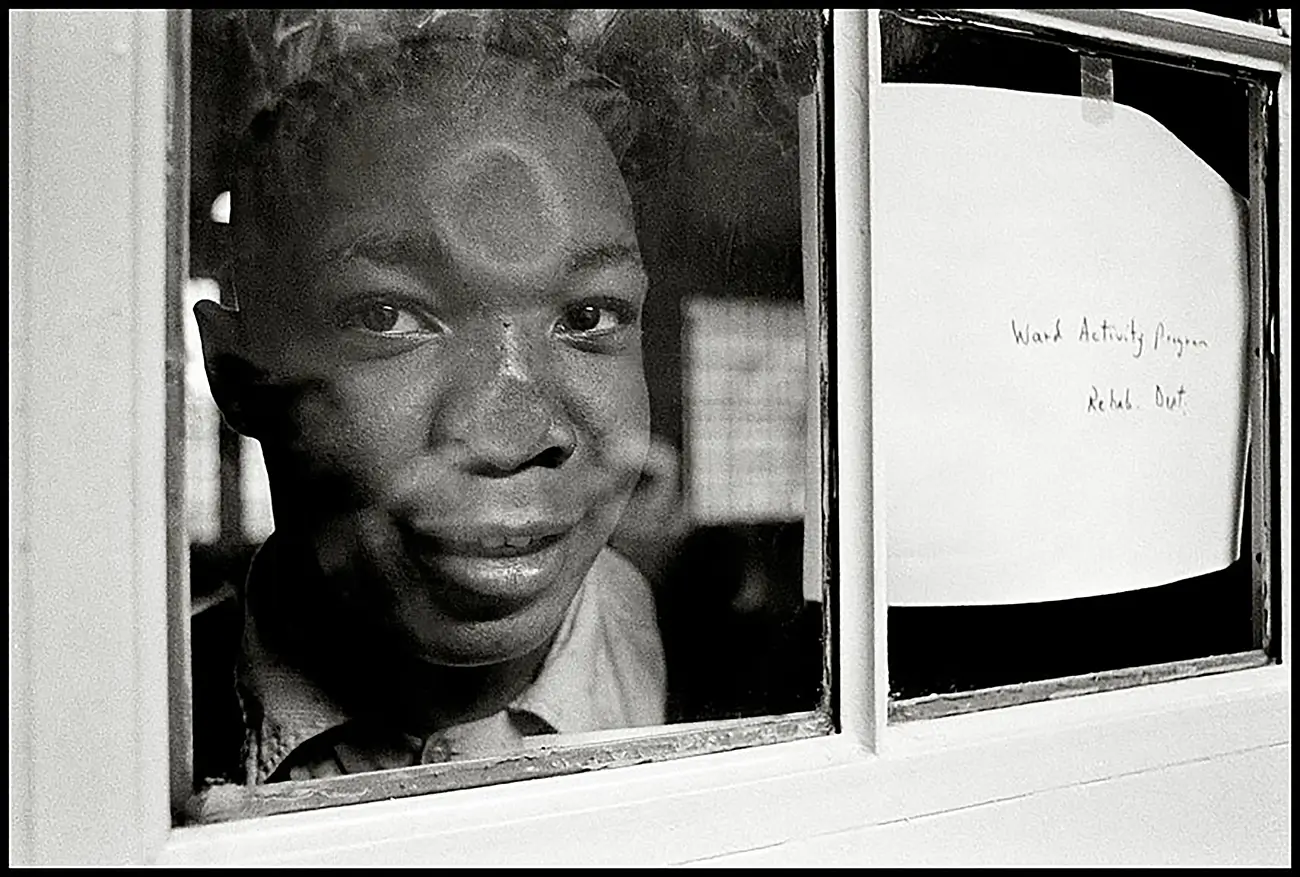
Untitled 1981, Photograph Silver Gelatin © Robert Mack
Portrait photography to me can reveal the subject's emotion, or non-emotion, subliminal unconsciousness, vulnerability, or even defiance. Psychologists say there are 27 distinct emotions. What more would one want to photograph? The human form photographed can depict what the subject is experiencing at that moment and even reveal, at times, the personality of the individual.
All About Photo: Your series, Not Guilty by Reason of Insanity, was made in the 1980s inside a maximum-security psychiatric hospital. What initially motivated you to undertake this project?
I had been working as a national TV producer for 2 years with Oprah Winfrey down the hall. But the station’s programming was leaning way to the right, so I left. I then decided and manifested that my next project would be the most intense and important one that I’ve ever done. I visited several depressing prisons and then one day heard on NPR radio that a jazz saxophonist was playing at a maximum security hospital for the criminally insane. Intrigued, I visited that hospital and began the Not Guilty project that lasted over 2 years.
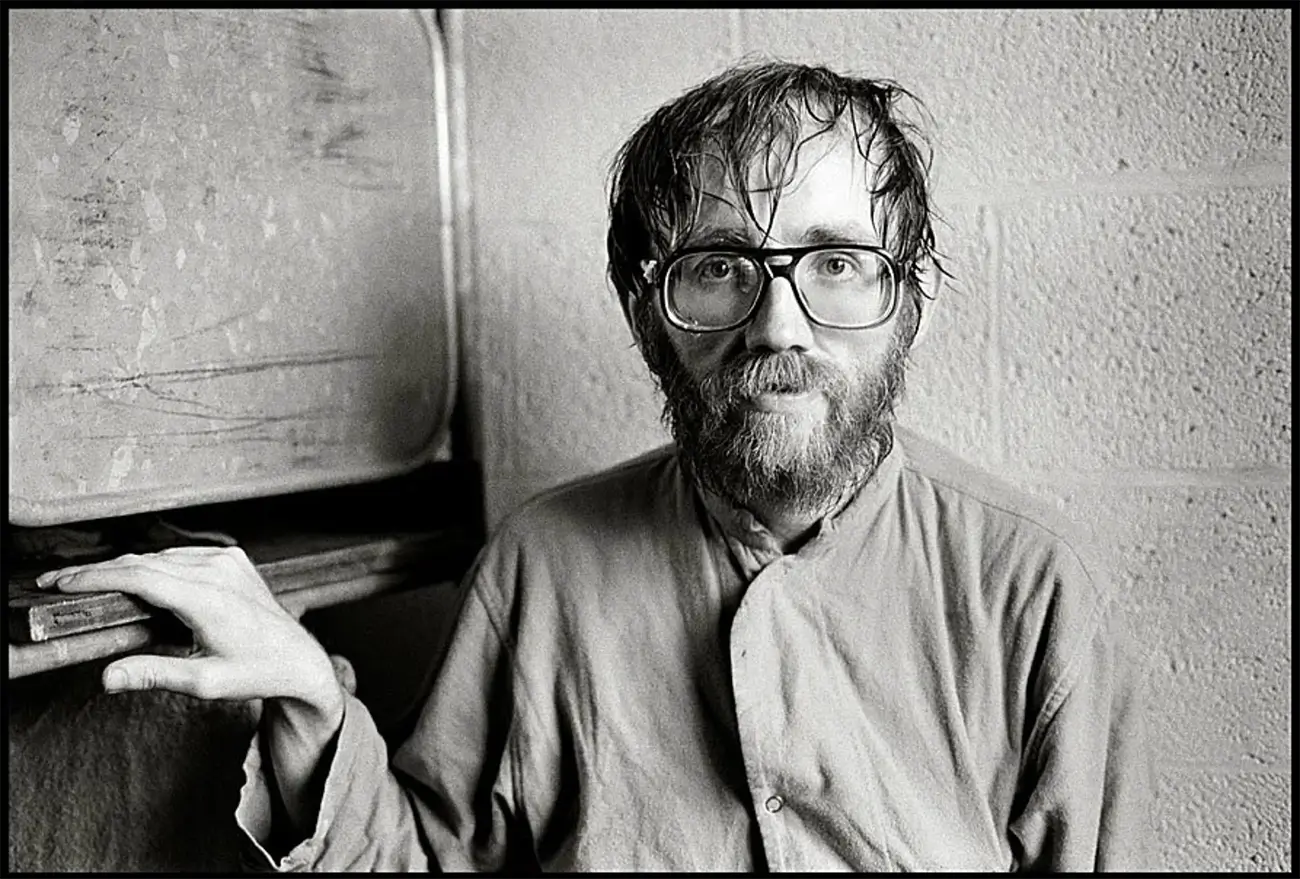
Untitled 1981, Photograph Silver Gelatin © Robert Mack
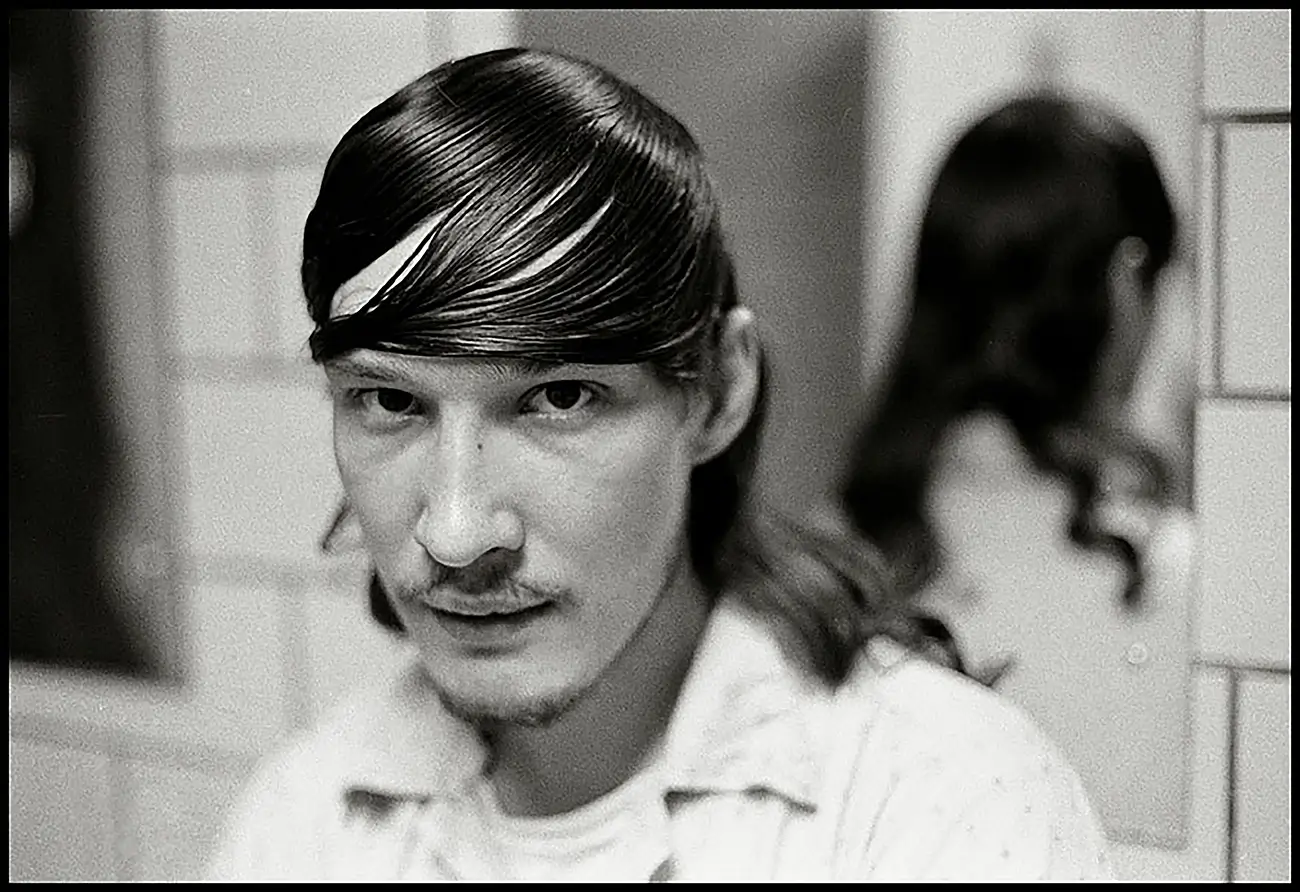
Untitled 1981, Photograph Silver Gelatin © Robert Mack
Access to the Perkins Hospital was provided by an amazing art therapist who believed that inviting artists to interact with the patients would be good for both the patients and the artists. The therapist, superintendent and patients trusted me over time, so I was able to come and go to do my research and media activity almost at any time of day I chose.
All About Photo: What did you think about the responsibility of photographing other people in such an intimate setting at the time?
I approached this photography with a clear intention of trying to take images without judging the individual, even though half of these men were dangerous to themselves or others, and many had committed murder during their psychotic episodes. I remember this one patient who absolutely refused to be photographed. He was extremely depressed, sat alone on a bench, smoking, his body curled away from anyone in the room. After many weeks of my visiting this particular ward, the man suddenly appeared in front of me and boldly announced, “Okay, you can take my picture now.” He went back to his spot on the bench, and I took several images. When I tried to get him to smile, he couldn’t shake that look of deep depression. The next day I gave him his ‘best looking’ photograph. He stared at it long and hard, then looked up at me and said, “I thought it was this bad.” I was crushed by his reaction, and sensing my concern, he explained, “You know the mirrors in the bathrooms, they’re covered with thick plexiglass so that we won’t kill ourselves. The funny thing is, though, the plexiglass...it ends up warping our reflection, distorting our image, like those fun-house mirrors at a carnival.” I stared back uncomfortably, not knowing how to respond. Finally, he said, “I’ve been here at this hospital for over eighteen months and this is the first time I’ve clearly seen myself.” Then he added, “I’d like to keep this photograph.”
All About Photo: Looking back, how do you see the work now? Has your perspective on the ethics or meaning of the series changed over time?
Today, when I look back on the work, I’m grateful that I had a clear instinctual approach on how to photograph these subjects, most of whom were paranoid schizophrenics and who normally would not want to be photographed. As I stated before, my intention was one of non-judgement, trying not only to document the moment between the subject and myself, but by also keeping in mind the importance of the images being created. This awareness was immediately reinforced by examining the negative contact sheets and the resulting test prints made.
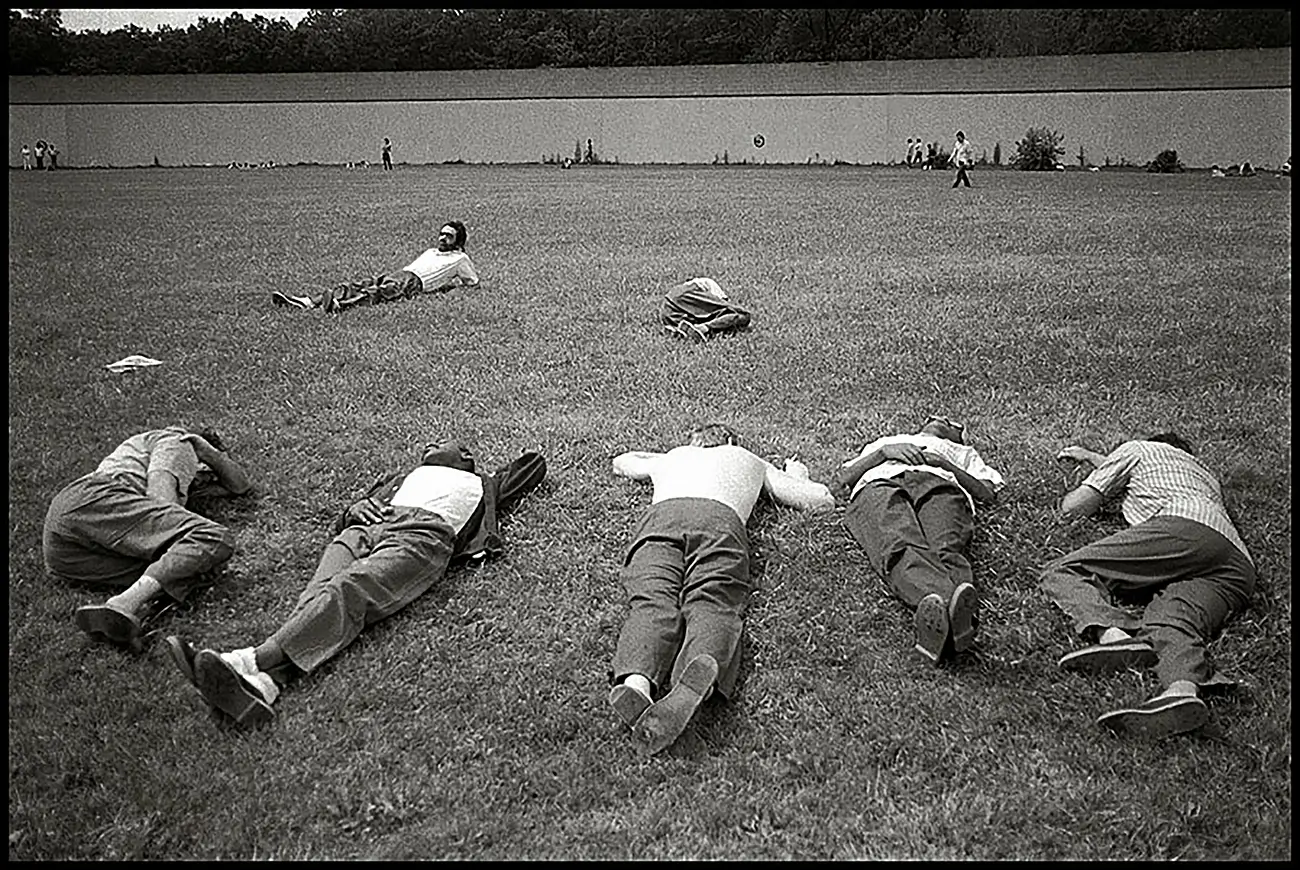
Untitled 1981, Photograph Silver Gelatin © Robert Mack
I’d say that more than half the time, I decided on taking portraits, away from others, where both the individual and myself could interact in the most intimate of ways possible. I used a 35 mm Nikon Nikkormat FT SLR film camera with 2 lenses: a standard 50 mm lens and also a 35 mm. I never used a flash for subjects who normally did not want to be photographed.
All About Photo: Did working on Not Guilty by Reason of Insanity affect the way you later approached photographing people in other intimate circumstances?
Yes, during my ongoing Wrapped Series project, I photographed nude individuals lying on the desert floor, and approached this project and subjects in ways similar to my criminally insane project. No others around, no assistants, no flash, only available light, with just myself and the subject interacting.
All About Photo: How have audiences responded to the series, both when it was first shown and in more recent years?
I’m grateful to say that when the series was first shown at the Baltimore Museum of Art exhibition and over the years until today, the reception has been amazingly positive. Yes, the subject is challenging, provocative, even depressing, but audiences understand the importance of the work and are genuinely moved by seeing the photographs.
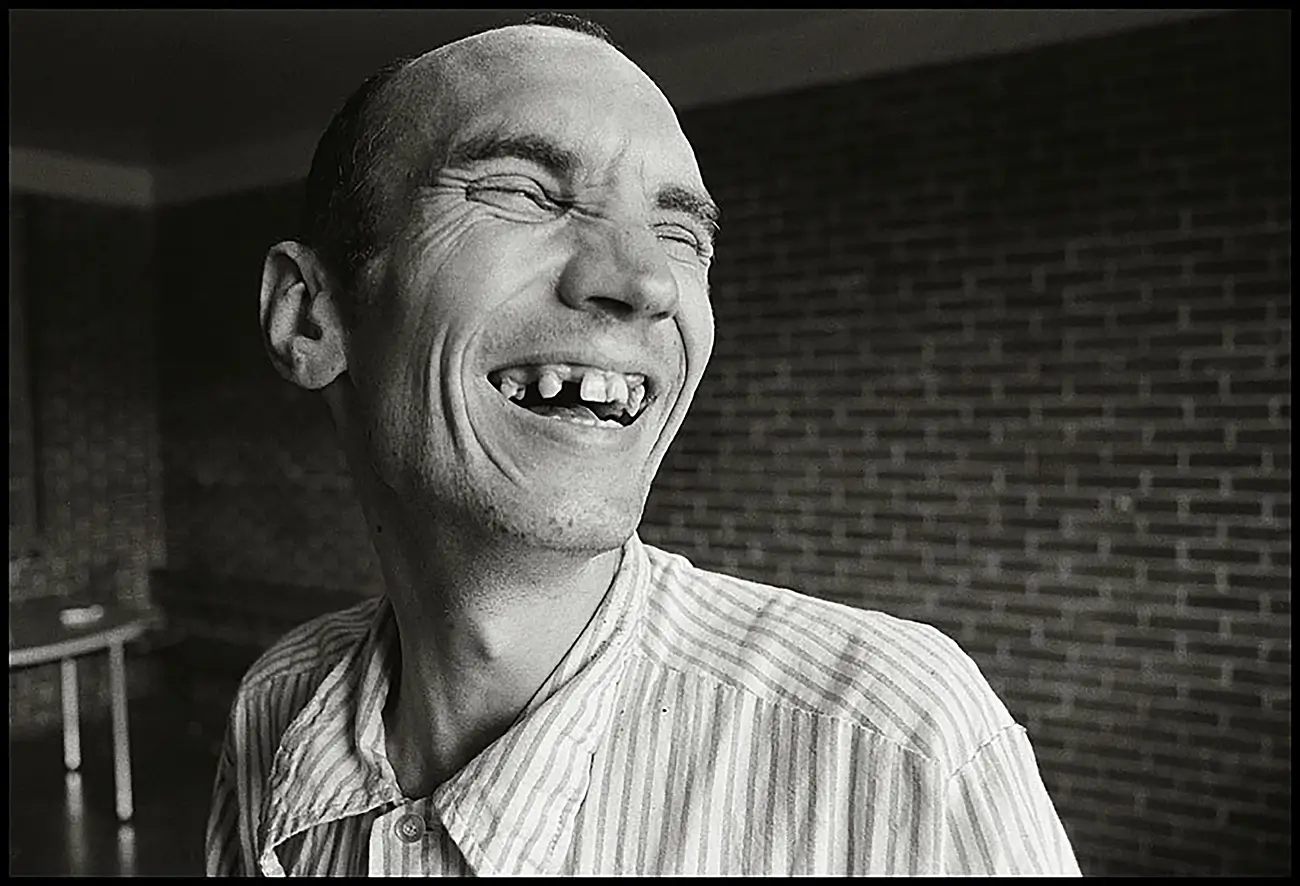
Untitled 1981, Photograph Silver Gelatin © Robert Mack
Again, photography is such an incredible medium, where the photographer can document vulnerable subjects by producing images that not only honor their humanity, but potentially have the power to change societal perception of the themes being presented. The Baltimore Museum of Art wrote: “In 1981, photographers Robert Mack and Grace Zaccardi took a series of chilling photographs of patients at an American maximum security facility for the criminally insane. With the extraordinary cooperation of the hospital administration and the surprising openness and trust of the patients themselves, Mack and Zaccardi produced an impressive photographic essay exploring the complex social and human issues that make institutions like this hospital seem both frightening and inaccessible. It would be easy to sensationalize this situation, but the photographers have succeeded in approaching this project with a clear concept, which does not exploit the lives of the subjects. Reinforced by exceptional artistic quality, these photographs challenge our stereotyped views while enriching our personal sensitivity. The fate of the criminally insane, sometimes committed for unspeakable atrocities, charges our emotions, often leading to regrettably predictable intolerance and misunderstanding. In the best tradition of documentary photography, these images educate, humanize our perceptions, and graphically illustrate the conflicts surrounding the incarceration of the criminally insane.”
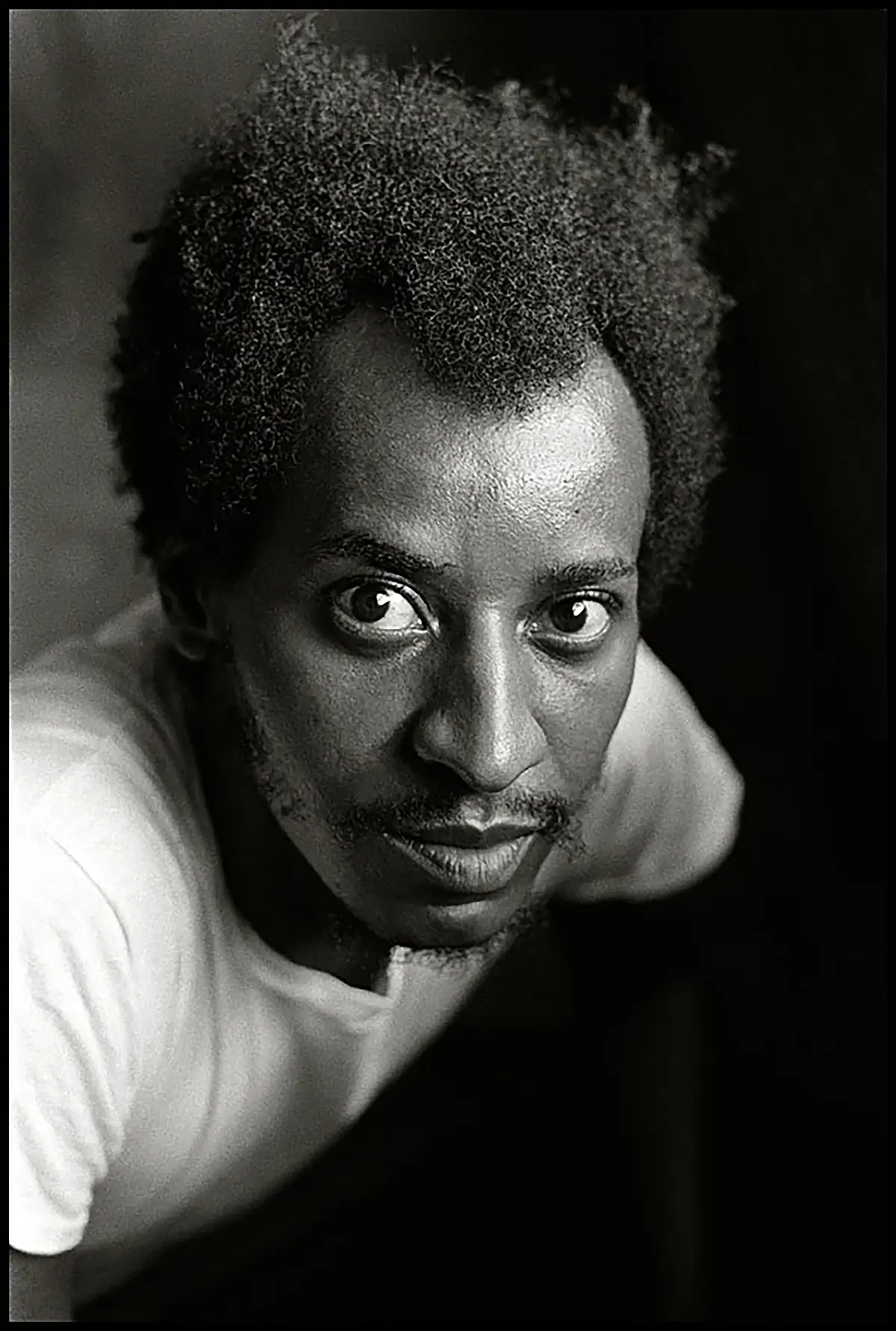
Untitled 1981, Photograph Silver Gelatin © Robert Mack
